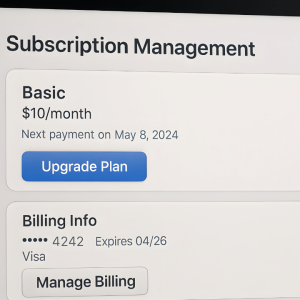How to Collaborate with Development Teams Remotely
In today’s rapidly evolving work environment, collaborating with remote software development teams has become the norm. Effective remote collaboration can be a game-changer for productivity and innovation, but it requires intentional strategies and tools to make it work smoothly. Whether you're a project manager or a developer, these actionable tips will help you manage remote developers and build strong virtual teamwork.
1. Set Clear Expectations and Communication Channels
Clear communication is the cornerstone of any successful remote collaboration. Start by establishing regular check-ins, and ensure that team members understand their roles, deadlines, and expectations.
- Tip: Utilize project management tools like Trello or Asana to outline tasks, set deadlines, and track progress in real time. These platforms allow teams to stay aligned and ensure that nothing slips through the cracks.
2. Use the Right Tools for Virtual Collaboration
Without face-to-face meetings, it’s essential to have reliable tools for communication and project management. Video conferencing tools like Zoom or Microsoft Teams are indispensable for maintaining a personal touch, even remotely. At the same time, collaboration platforms like Slack, Jira, or Confluence help developers keep track of bugs, project milestones, and documentation.
- Tip: Create dedicated channels for different teams or topics, making it easier to track conversations and avoid information overload.
3. Promote an Agile Workflow
Remote teams can be even more efficient when they adopt Agile principles, which allow for flexibility and continuous feedback loops. Agile workflows encourage regular sprint cycles, stand-up meetings, and incremental progress on projects. This approach is particularly effective in a remote environment where traditional, rigid schedules might not be as effective.
- Tip: Use tools like Jira or Atlassian to implement an Agile process and enable transparent communication between developers and stakeholders.
4. Foster a Culture of Trust and Accountability
Managing remote developers requires a high level of trust. Without the ability to supervise team members in person, it’s important to set clear goals and deliverables. Allow team members the autonomy to execute tasks, but ensure there is accountability at every level.
- Tip: Use performance tracking software to monitor progress, but avoid micromanaging. This will help remote developers feel trusted and empowered.
5. Encourage Collaboration and Knowledge Sharing
Even though your team is remote, it’s essential to foster a collaborative culture. Encourage team members to share knowledge, ask for help, and provide feedback. This helps build a supportive environment and ensures that the team is always learning and growing together.
- Tip: Create a centralized knowledge base or wiki where team members can document solutions to common problems, share code snippets, and post updates.
6. Optimize Time Zones for Collaboration
Working with remote developers often means dealing with different time zones. To optimize collaboration, you need to understand your team’s schedules and plan meetings that work for everyone.
- Tip: Use tools like World Time Buddy to help you find overlapping hours that are convenient for the team to meet.
7. Offer Regular Feedback and Recognition
Remote workers can sometimes feel isolated, which is why it’s crucial to offer regular feedback and recognition for a job well done. Whether it's through a quick Slack message or a shout-out during a meeting, acknowledging accomplishments goes a long way in maintaining team morale and motivation.
- Tip: Schedule weekly or bi-weekly one-on-one meetings with team members to discuss progress, address concerns, and provide constructive feedback.
8. Document Everything for Clarity
In a remote environment, written communication often takes the place of face-to-face conversations. Documenting meetings, decisions, and code changes helps ensure everyone is on the same page.
- Tip: Keep thorough documentation in shared platforms like Google Docs, Confluence, or GitHub, and make sure it’s easily accessible to everyone on the team.
9. Build Team Bonding Activities Into the Remote Routine
While work is important, building team camaraderie is crucial, even in a remote setup. Organize virtual events, such as trivia games or casual coffee chats, to help team members connect beyond work tasks.
- Tip: Set up virtual social gatherings to maintain a sense of team unity and encourage informal interactions.
How MP Nerds Ensures Seamless Communication and Collaboration
At MP Nerds, we understand the importance of effective communication and collaboration in remote environments. Our team is equipped with cutting-edge tools and workflows that ensure that we maintain high standards of productivity, transparency, and collaboration, no matter where our developers are located. From Agile development practices to comprehensive project management platforms, MP Nerds ensures that remote teamwork is streamlined, efficient, and successful.
Ready to take your remote collaboration to the next level? Contact MP Nerds today to see how our expert team can help you manage remote developers and optimize your project outcomes.
By implementing these virtual teamwork tips and leveraging the right tools, you can ensure that your remote development teams stay connected, productive, and engaged. For more detailed guidance on team collaboration, check out resources from Atlassian, Trello Blog, and Asana Resources.






